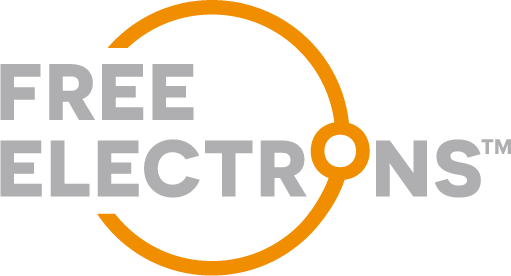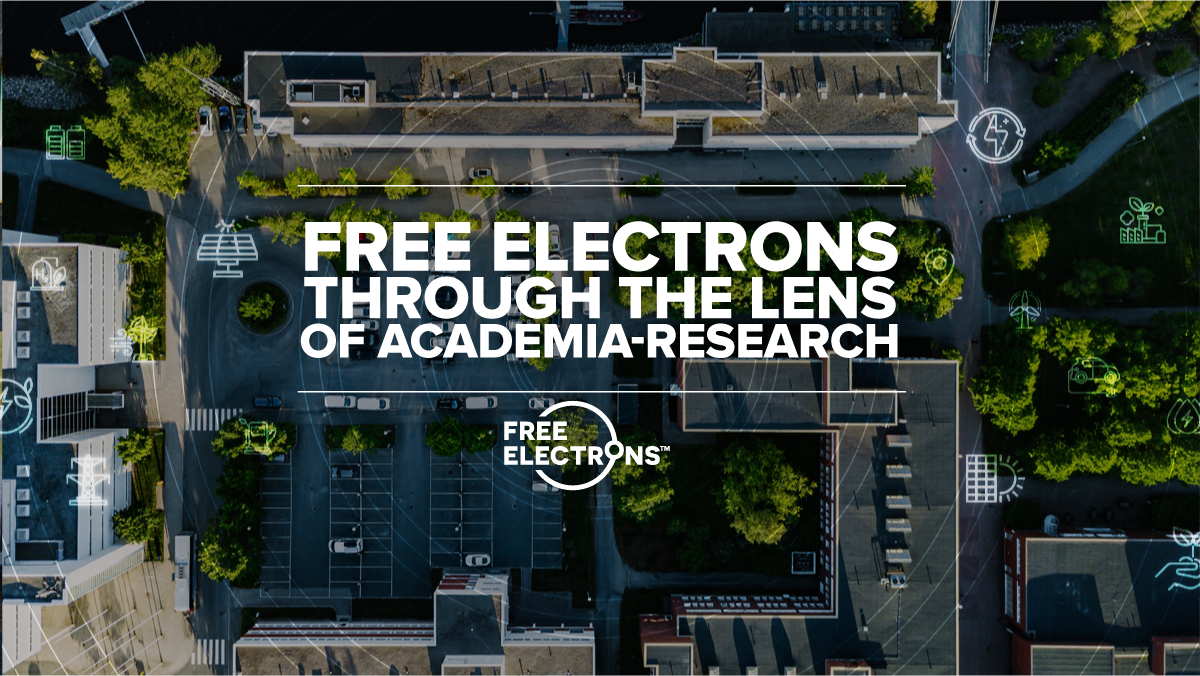Open innovation is becoming increasingly vital across various industries especially in the rapidly changing energy sector. Free Electrons has created a new flagship model of Open Innovation, bringing together utilities and start-ups from around the world, with the shared purpose of co-creating a sustainable energy future. The Free Electrons program has served as a fertile ground for a team of researchers, including Ann-Kristin Zobel (Professor of Management at the University of St.Gallen), Stephen Comello (An officer and senior vice president at the EFI foundation), Lukas Falcke (Assistant Professor in Strategy & Innovation at VU Amsterdam), Qinli Lu (Visiting research fellow at INSEAD) who have studied the program for several years to better understand how incumbents and startups can effectively collaborate between and amongst themselves to create and scale clean energy solutions.
Free Electrons can help utilities succeed in times of Sustainable Development Goals and net-zero ambitions. In a world where the urgency of addressing climate change is paramount, the role of electric utilities cannot be understated. Climate change has emerged as one of the most pressing global challenges, demanding concerted efforts to achieve net-zero carbon emissions by 2050. Established energy incumbents and innovative new entrants play a crucial role in driving the race to net zero.
In a recently published study based on Free Electrons research, the concept of “Ecosystem Realignment” emerges as a key strategy that incumbents can adopt to align their operations with climate objectives. Ecosystem realignment refers to the strategic transformation of an industry’s structure, roles, and relationships, often facilitated by digital technologies, to drive climate impact. This concept highlights the interplay between incumbent players and disruptive new entrants, with the common goal of achieving net-zero carbon emissions. The study identifies three distinct ecosystem realignments, each with its unique mechanisms for unlocking climate impact. Let’s explore each one:
Ecosystem Realignment 1: Leveraging Digital Infrastructure for Efficiency
Incumbent players can take the lead in transforming the energy industry by digitalizing their infrastructure and offering a digital platform to third-party software complementors. This collaboration enhances resource efficiency by optimizing data collection and analysis. For example, utilities can collect data on electricity consumption and production, sharing it with third-party providers who use advanced analytics to offer energy management solutions. However, incumbents must be capable of attracting third-party complementors to ensure the success of this realignment.
Ecosystem Realignment 2: Empowering Customers for Flexibility
Here, incumbents collaborate with third-party complementors who provide hardware devices for customers to interact with the digitalized infrastructure. This realignment enhances the resilience and flexibility of the existing infrastructure. For instance, customers can optimize their electricity usage based on changing prices and carbon intensity. To scale this realignment, startups need to overcome incumbents’ resistance, while incumbents must attract third-party device complementors.
Ecosystem Realignment 3: Disruptive Digital Platforms
In this realignment, startups disrupt the industry by introducing new digital platforms that connect customers, enabling the sharing of renewable energy generation resources and energy data. The startup becomes the orchestrator, managing relationships between incumbents, customers, and other actors, whereas the incumbent takes on a more peripheral position. This realignment emphasizes the importance of startups’ capabilities in rapidly implementing innovative and decentralized clean-tech business models. However, the involvement of incumbents in realizing the climate benign value proposition is still crucial, even though their role shifts to that of a complementor.
Boundary Conditions for Scaling Climate Impact
Importantly, while these realignments point to potential pathways to a positive climate impact, the realization of that potential and their scaling is contingent on the strategic support and resources allocated by incumbents. A post-hoc analysis conducted in the study emphasizes the influence of incumbents’ strategic decisions on the viability of ecosystem realignments. Realignment 1 is less likely to scale if incumbents struggle to attract third-party software complementors. Similarly, realignments 2 and 3 face challenges when incumbents resist the entry of third-party device complementors or new orchestrators by underfunding the initiatives and acting defensive.
Conclusion:
In our study, we investigated 57 pilot projects between the electricity utilities and startups of the first four Free Electrons cohort (2017 – 2020) that are exploring novel pathways to climate mitigation in the electricity sector and beyond. Since conducting the study, Free Electrons has run three additional annual programs totaling deals exceeding USD $ 87 million (pilots, deployment, and investments). Importantly, while utilities can explore novel climate mitigation pathways with startups, achieving actual impact, requires systematic scaling of solutions and significant investments – also in solutions that might push utilities into more peripheral positions of the ecosystems. While, at first sight, this might not seem attractive, in a portfolio of climate change mitigation solutions, this might be an important complementary investment to strive in a future world of decarbonized ecosystems.
As managers of incumbents or startups, understanding the dynamics of ecosystem realignments is crucial for advising businesses on their climate action strategies. By recognizing the importance of collaborative efforts, businesses can leverage the strengths of both incumbents and new entrants to drive climate impact. The Free Electrons program enables utilities to widen their lens by adopting ecosystem strategies that combine multiple complementary offerings into climate-benign value propositions. Ecosystem realignment isn’t just a theoretical concept – it’s a practical avenue for businesses to transform themselves, make a positive environmental impact, and thrive in a changing world.





Comments